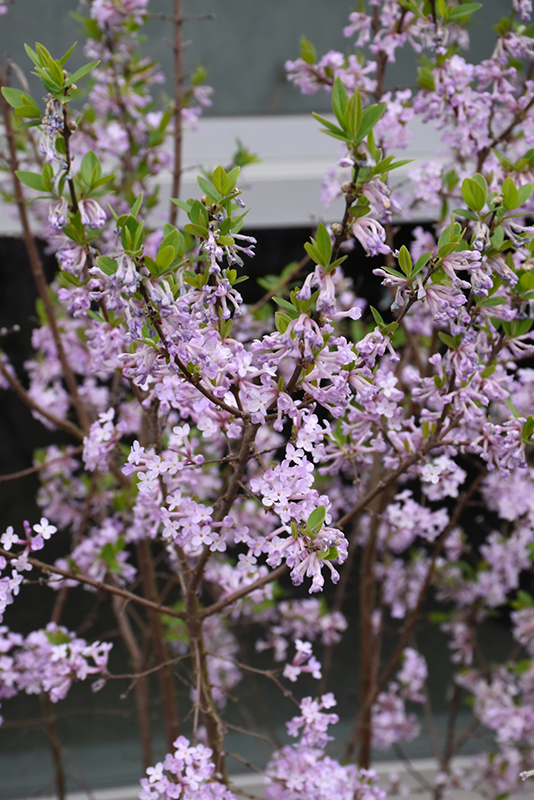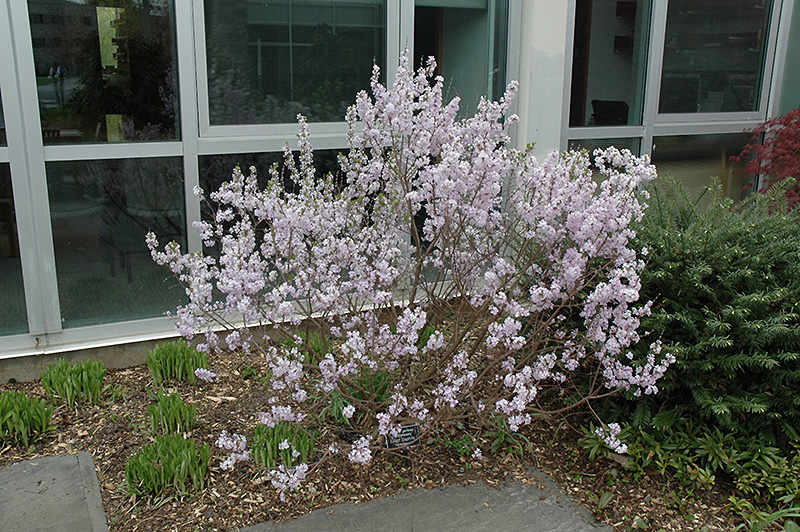Shonnard’s Nursery
Plant Finder Tool
Hackenberry Lilac Daphne
Daphne genkwa 'Hackenberry'
Height: 4 feet
Spread: 4 feet
Sunlight:
![]()
![]()
Hardiness Zone: 4b
Group/Class: Hackenberry Group
Description:
A large flowered form of this shrub, producing masses of lilac flowers in spring for a long period; grows upright with thin stems and is sparsely branched; a graceful plant that is low maintenance; all parts of this plant are poisonous
Ornamental Features
Hackenberry Lilac Daphne has lilac purple tubular flowers along the branches from early to mid spring, which emerge from distinctive gray flower buds before the leaves. It has green deciduous foliage which emerges light green in spring. The fuzzy pointy leaves turn buttery yellow in fall. The smooth tan bark adds an interesting dimension to the landscape.
Landscape Attributes
Hackenberry Lilac Daphne is a multi-stemmed deciduous shrub with an upright spreading habit of growth. Its relatively fine texture sets it apart from other landscape plants with less refined foliage.
This shrub will require occasional maintenance and upkeep, and should never be pruned except to remove any dieback, as it tends not to take pruning well. Deer don't particularly care for this plant and will usually leave it alone in favor of tastier treats. Gardeners should be aware of the following characteristic(s) that may warrant special consideration;
- Disease
Hackenberry Lilac Daphne is recommended for the following landscape applications;
- Mass Planting
- General Garden Use
Planting & Growing
Hackenberry Lilac Daphne will grow to be about 4 feet tall at maturity, with a spread of 4 feet. It tends to fill out right to the ground and therefore doesn't necessarily require facer plants in front. It grows at a medium rate, and under ideal conditions can be expected to live for approximately 10 years.
This shrub does best in full sun to partial shade. It prefers dry to average moisture levels with very well-drained soil, and will often die in standing water. It is not particular as to soil type or pH. It is somewhat tolerant of urban pollution, and will benefit from being planted in a relatively sheltered location. Consider applying a thick mulch around the root zone in winter to protect it in exposed locations or colder microclimates. This is a selected variety of a species not originally from North America, and parts of it are known to be toxic to humans and animals, so care should be exercised in planting it around children and pets.


